Space Image of the Day Gallery (October 2017)
Half-Lit Dione
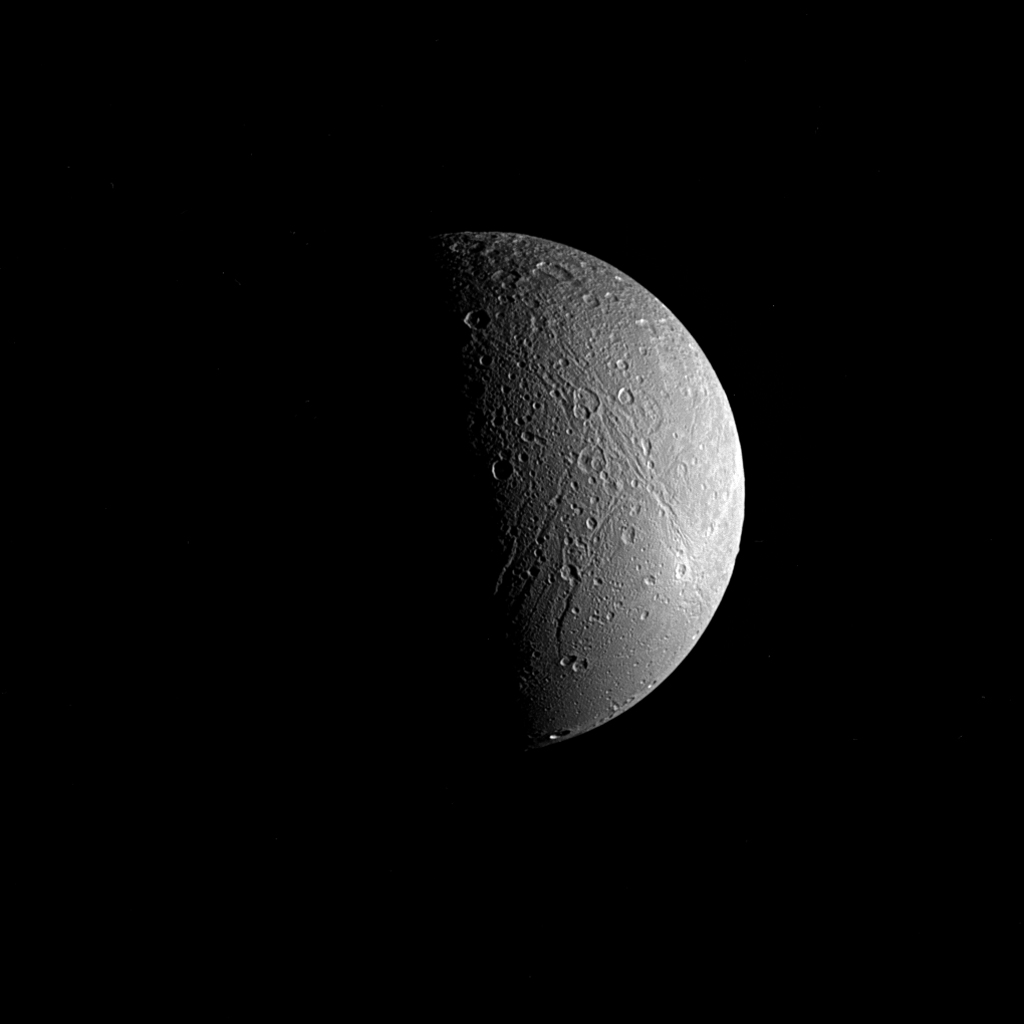
Tuesday, October 17, 2017: Saturn's moon Dione shines like a half moon in this photo from NASA's Cassini spacecraft. Dione is the fourth-largest moon of Saturn and is covered in craters and weird, curved canyons. Cassini captured this view on June 22, 2017, when it was about 224,000 miles (360,000 kilometers) from Dione. — Hanneke Weitering
Detroit Spotted from Space
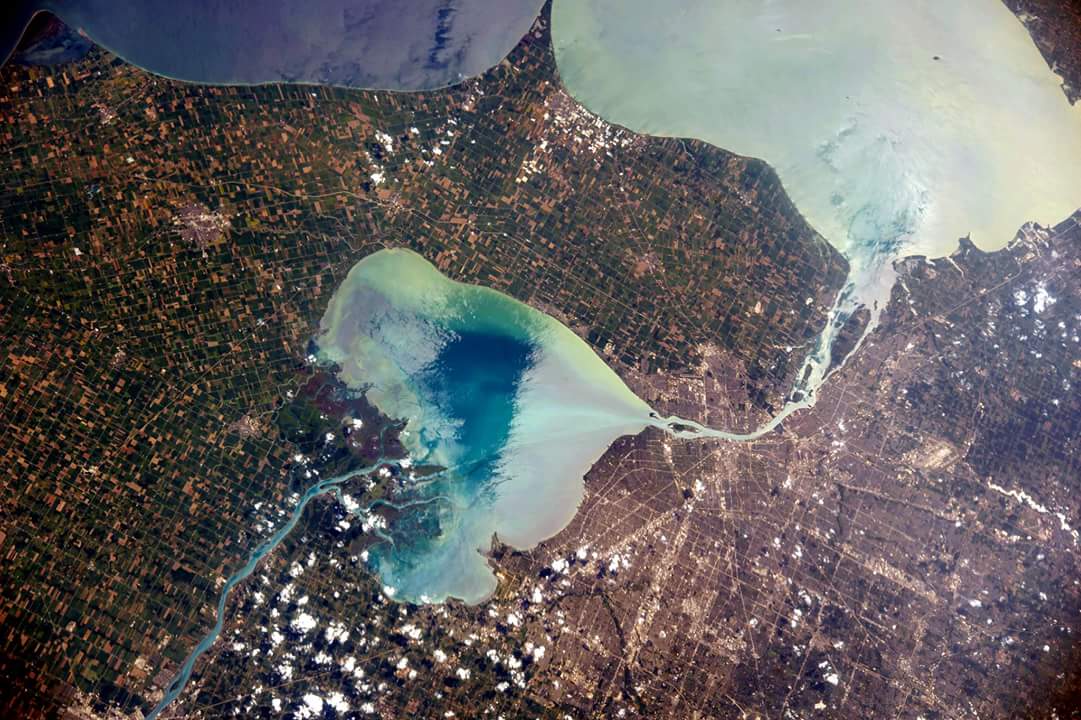
Wednesday, October 18, 2017: European Space Agency astronaut Paolo Nespoli snapped this photo of Detroit from the International Space Station. "Detroit is showing us astronauts some love thanks to the shape of Lake St. Clair," Nespoli wrote on Twitter. A portion of Lake Erie is also visible at the top of the photo. — Hanneke Weitering
The Falcon 9 'Nebula'
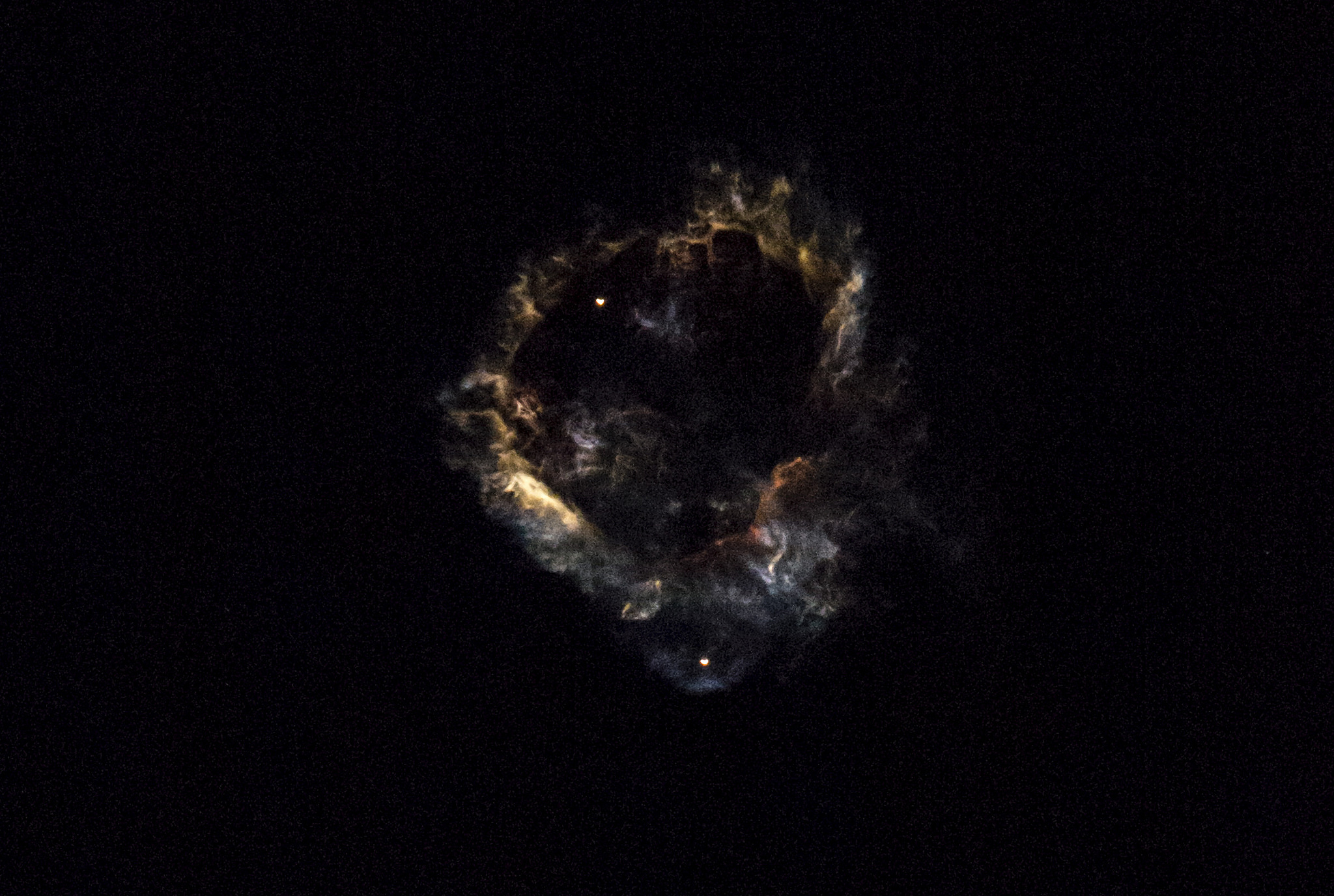
Thursday, October 19, 2017: This may look like a nebula in deep space, but this glowing cloud was photographed in Earth's atmosphere. The photo was taken shortly after a SpaceX Falcon 9 rocket launched with 10 Iridium communications satellites on Oct. 9. After main engine cutoff, flames coming out of the Falcon 9's nine first-stage engines dissipated into the darkness. A few seconds later, the first and second stages of the rocket separated, with the first stage returning to Earth for a landing. — Hanneke Weitering
A Solar Eclipse on Jupiter
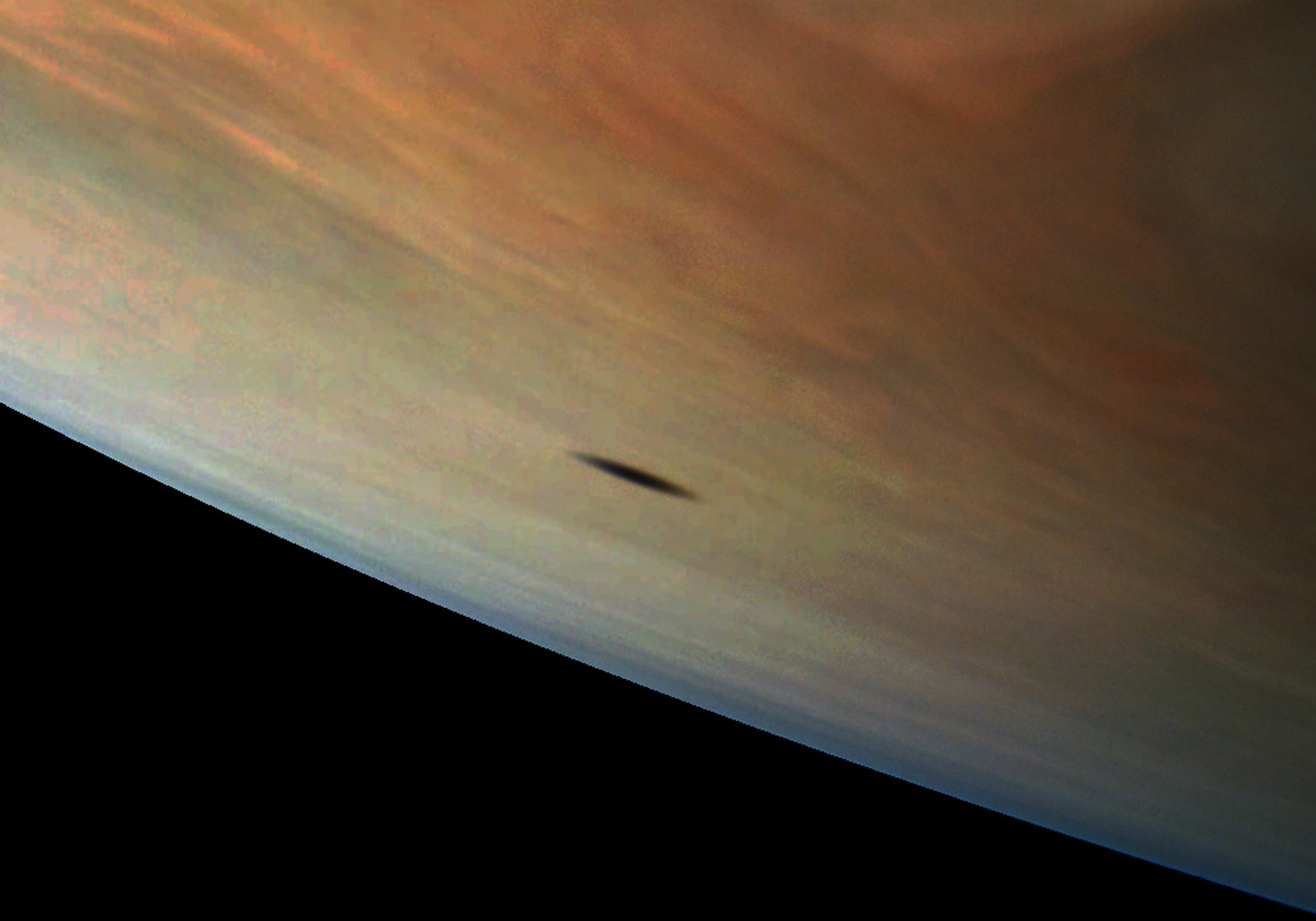
Friday, October 20, 2017: Amalthea, the largest of Jupiter's inner satellites, casts a shadow on the giant gas planet in this photo taken by NASA's Juno spacecraft. The moon's shadow has an elongated shape because of its position in relation to Jupiter, but also because the moon itself has an odd shape. Because Jupiter has at least 69 moons, solar eclipses like this one are more common than they are here on Earth. — Hanneke Weitering
A Solar 'Burp'
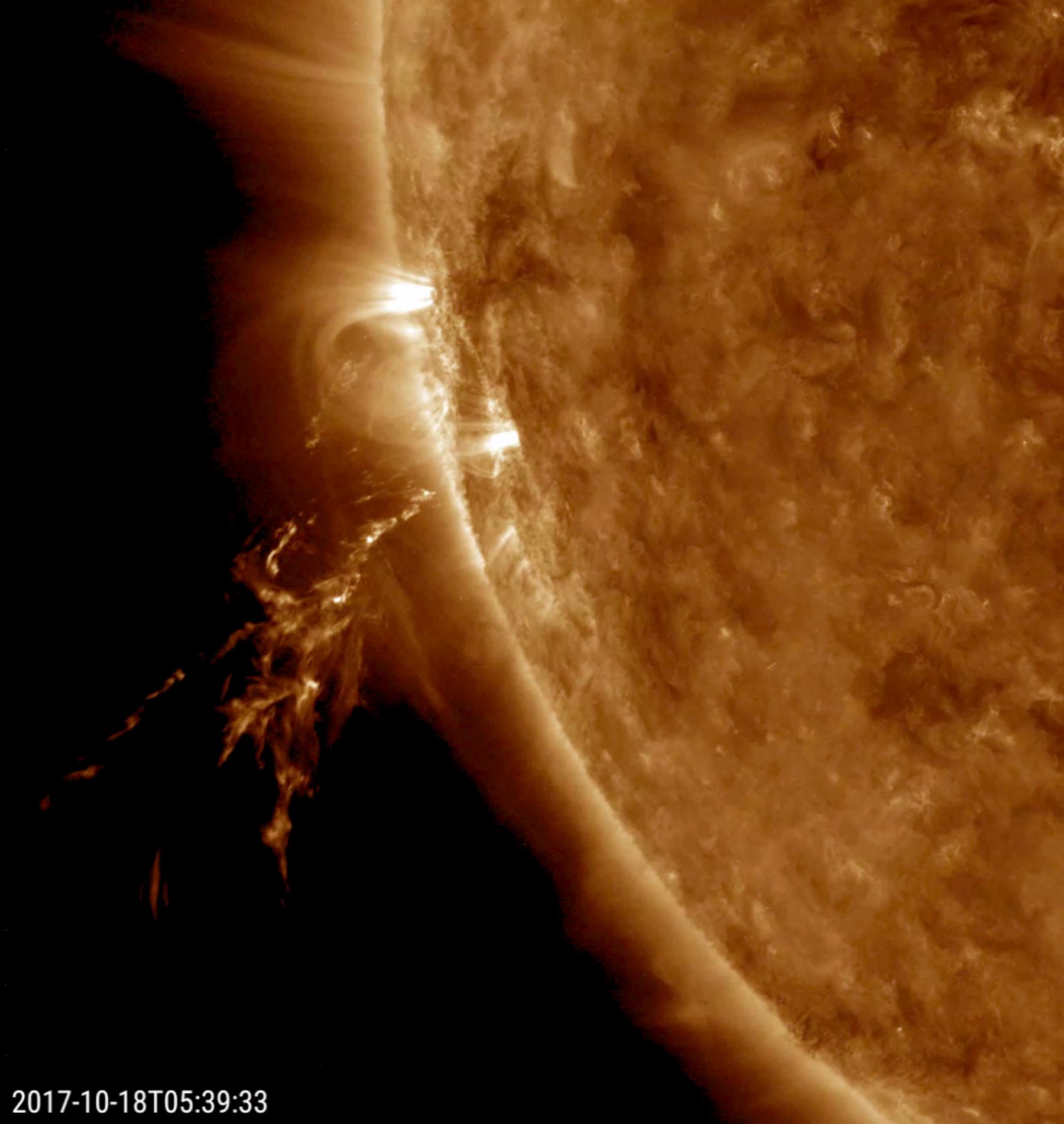
Monday, October 23, 2017: The sun spews out a bright stream of plasma in this image captured by NASA's Solar and Heliospheric Observatory (SOHO) last Wednesday (Oct. 18). This blast of plasma came from small eruption on the sun's surface that is just barely out of sight, located beyond the sun's edge in this view. — Hanneke Weitering
A Selfie with the James Webb Space Telescope
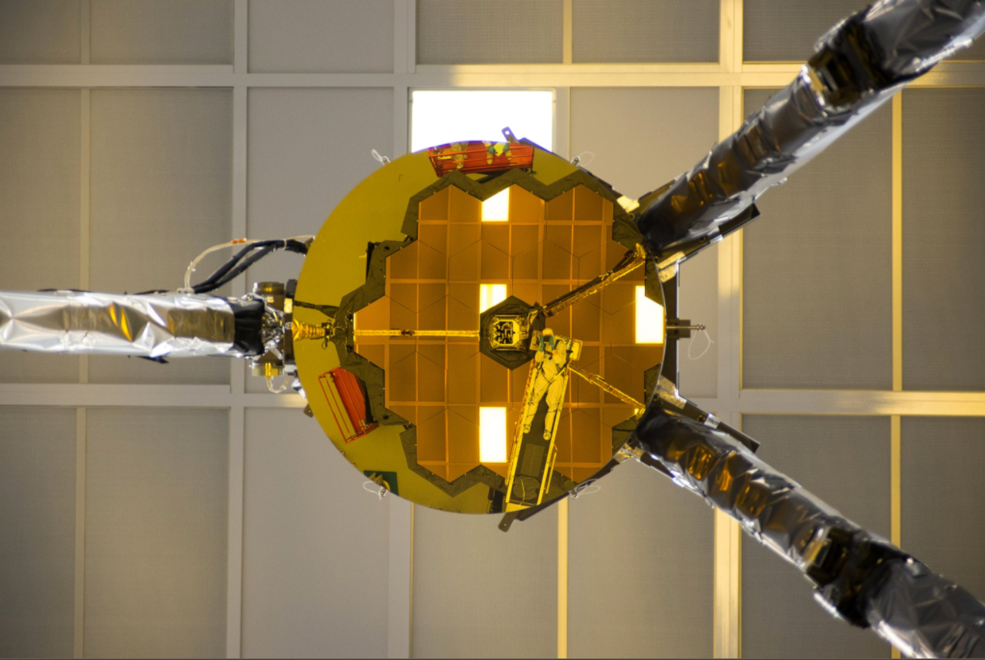
Tuesday, October 24, 2017: An engineer snapped this selfie with NASA's James Webb Space Telescope (JWST) during an optical test at the Johnson Space Center in Houston last Thursday (Oct. 19). While this may look like an opportune time to take an awesome selfie, this photo actually served a scientific purpose; it was used to verify the telescope's line of sight. Ball Aerospace engineer Larkin Carey was suspended above JWST's primary mirror and harnessed to a board when he pointed the camera toward the secondary mirror. — Hanneke Weitering
Orionid Meteor Over South Carolina
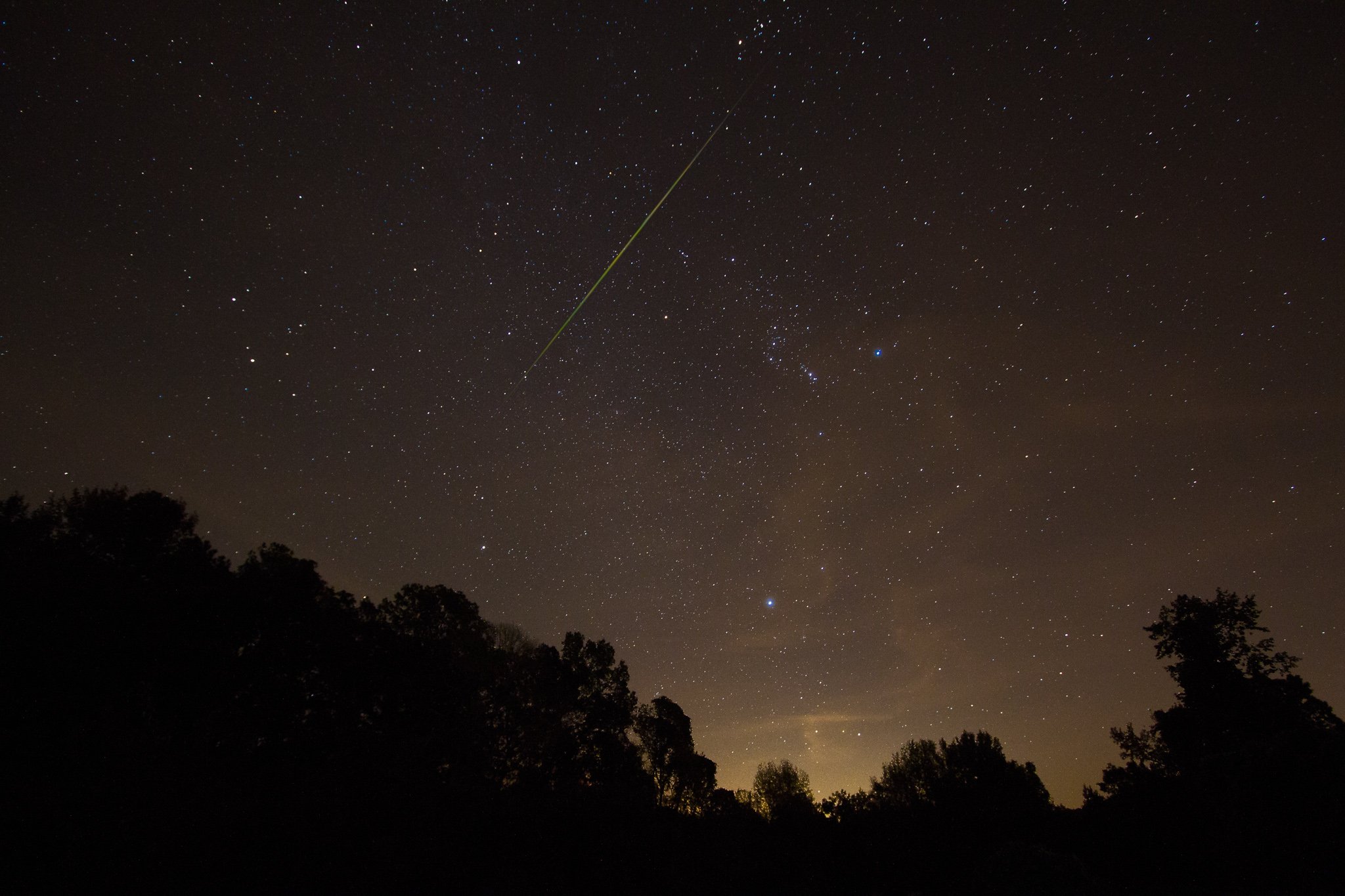
Wednesday, October 25, 2017: A bright, green fireball streaks through the starry sky over Whitmire, South Carolina in this photo taken during the 2017 Orionid meteor shower. Photographer Sathya Narayanan spotted this Orionid meteor at 2:50 a.m. EDT on Saturday (Oct. 21), when the meteor shower was at its peak. — Hanneke Weitering
Get the Space.com Newsletter
Breaking space news, the latest updates on rocket launches, skywatching events and more!
The Fornax Cluster
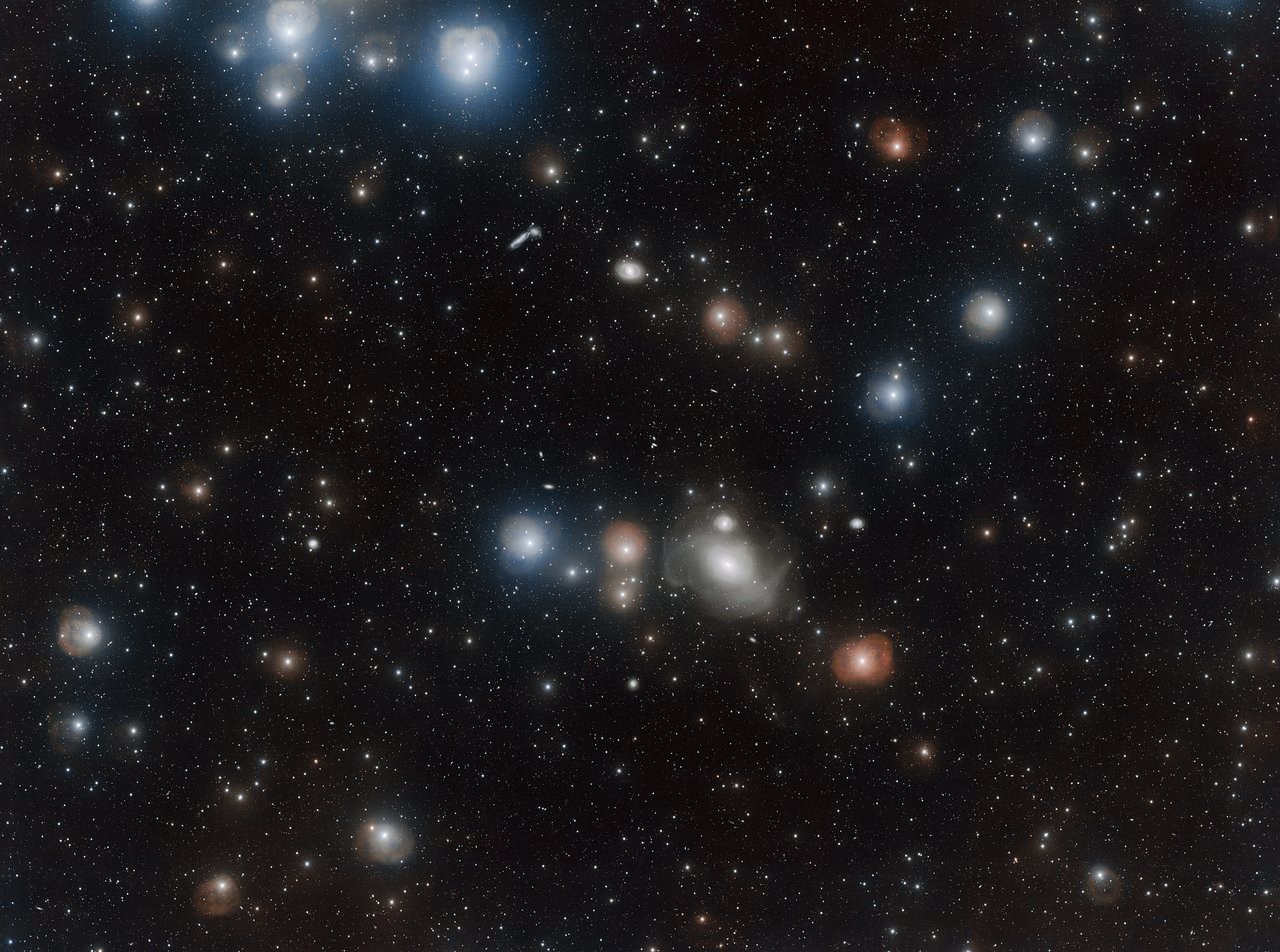
Thursday, October 26, 2017: Countless galaxies of all colors, shapes and sizes fill this deep-space view of the Fornax Cluster, one of the closest galaxy clusters to the Milky Way. This image was captured by the European Southern Observatory's Very Large Telescope in the Atacama Desert of Chile. — Hanneke Weitering
Nebulas in Orion
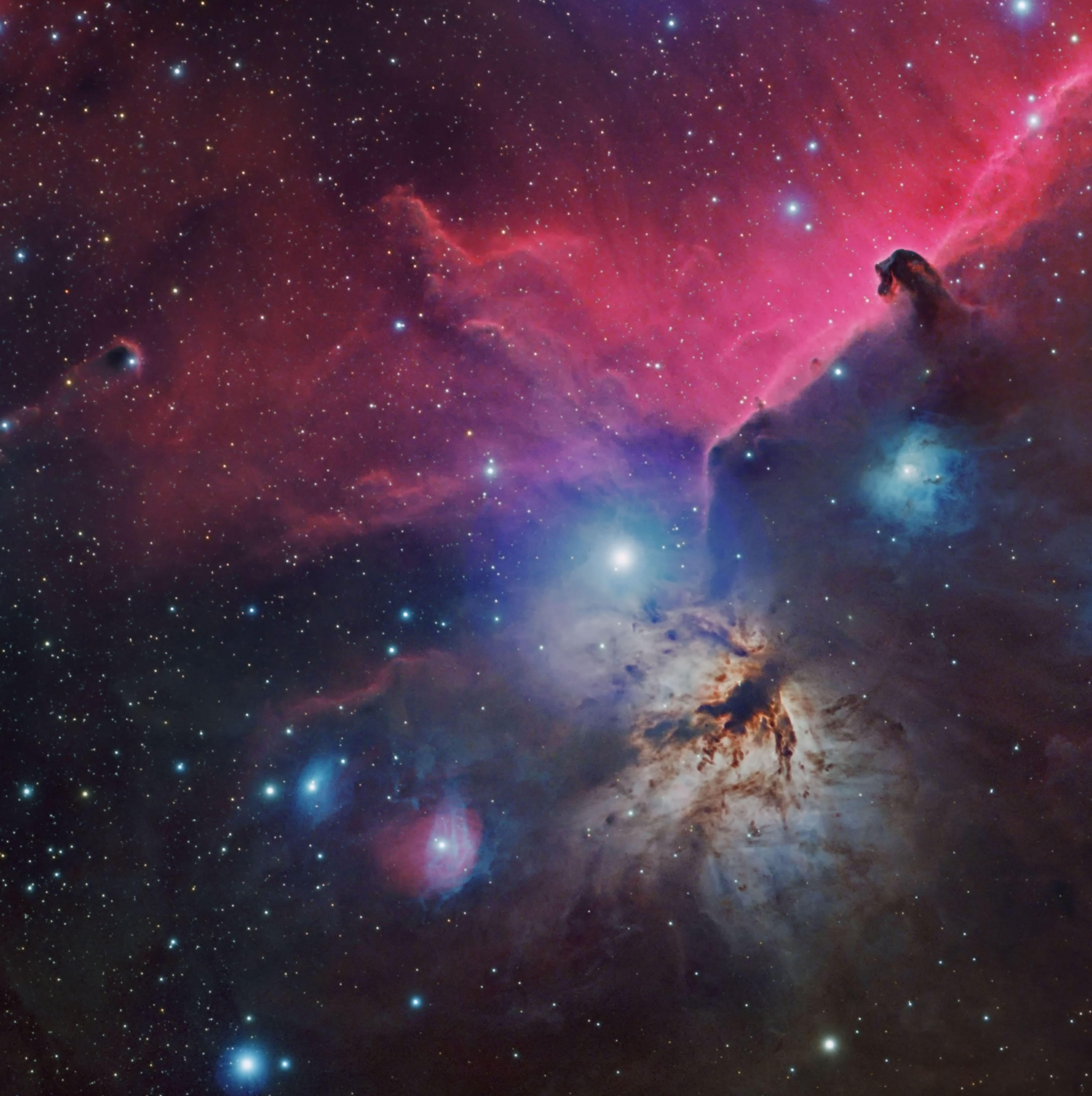
Friday, October 27, 2017: The bright emission nebula NGC 2024, also known as the Flame Nebula, glows beneath the dark Horsehead Nebula in this photo by astrophotographer Terry Hancock. The bright, red cloud behind them is the nebula IC 434. These nebulas are located in the Orion constellation to the far east of Orion's belt. — Hanneke Weitering
A Hole in Space
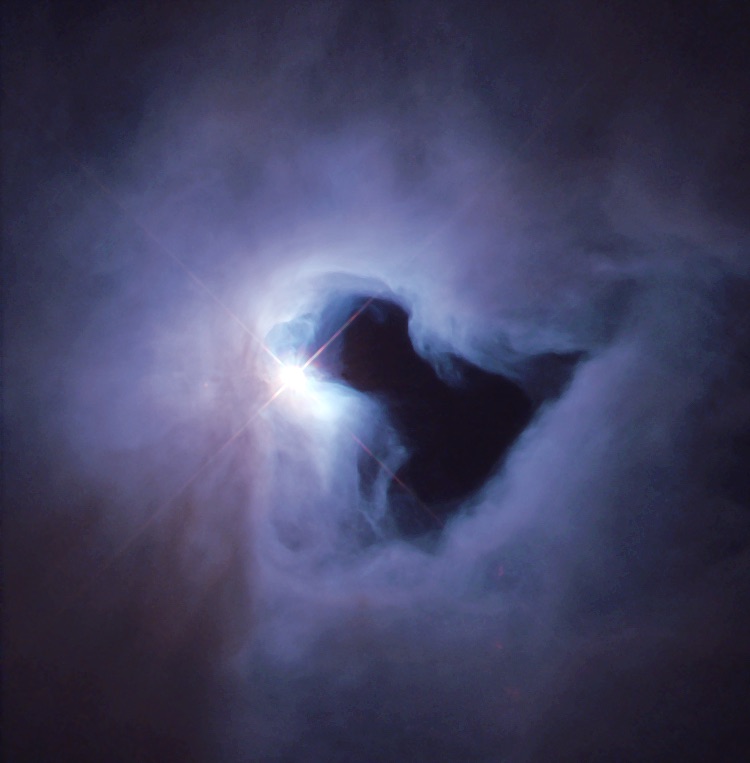
Monday, October 30, 2017: In this Hubble Space Telescope image of the nebula NGC 1999, a dark hole opens up inside a cloud of interstellar dust and gas. The bright star V380 Orionis illuminates the cloud, which does not emit any light of its own. NGC 1999 is classified as a reflection nebula, because it only shines light by reflecting nearby stars. — Hanneke Weitering
Join our Space Forums to keep talking space on the latest missions, night sky and more! And if you have a news tip, correction or comment, let us know at: community@space.com.

Space.com is the premier source of space exploration, innovation and astronomy news, chronicling (and celebrating) humanity's ongoing expansion across the final frontier. Originally founded in 1999, Space.com is, and always has been, the passion of writers and editors who are space fans and also trained journalists. Our current news team consists of Editor-in-Chief Tariq Malik; Editor Hanneke Weitering, Senior Space Writer Mike Wall; Senior Writer Meghan Bartels; Senior Writer Chelsea Gohd, Senior Writer Tereza Pultarova and Staff Writer Alexander Cox, focusing on e-commerce. Senior Producer Steve Spaleta oversees our space videos, with Diana Whitcroft as our Social Media Editor.









